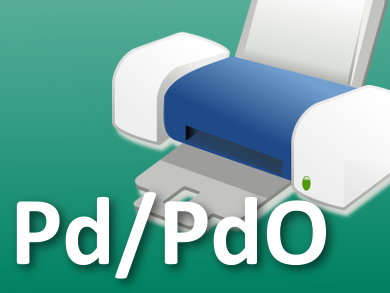The deposition of Pd/PdO films can be used to create electrically conductive interconnections and materials for applications in electrocatalysis, hydrogen storage, and sensing. Methods used for this purpose are complex and often require lithographical steps or templates to obtain the desired material properties.
M. Jamal Deen, McMaster University, Hamilton, Canada, Nan-Xing Hu, Xerox Research Centre of Canada, Mississauga, and colleagues have synthesized a variety of Pd/PdO film morphologies using an inkjet-printing process. A Pd-organoamine compound served as the precursor. It was printed onto glass substrates and subsequently decomposed to yield amine-stabilized Pd clusters. The researchers found that thermolysis of these clusters under air yielded smooth films. In contrast, sub-micron spherical aggregates were obtained under nitrogen and bilayer films under low-vacuum.
The highest conductivity was found for the smooth films which were prepared under air. According to the team, their method presents an easy route to selectively prepare Pd/PdO films with different morphologies and different electrical properties that can be tuned to the desired application.
- Morphology and electrical properties of inkjet-printed palladium/palladium oxide,
Yiheng Qin, Arif U. Alam, Matiar M. R. Howlader, Nan-Xing Hu, M. Jamal Deen,
J. Mater. Chem. C 2017.
DOI: 10.1039/c6tc05196k




